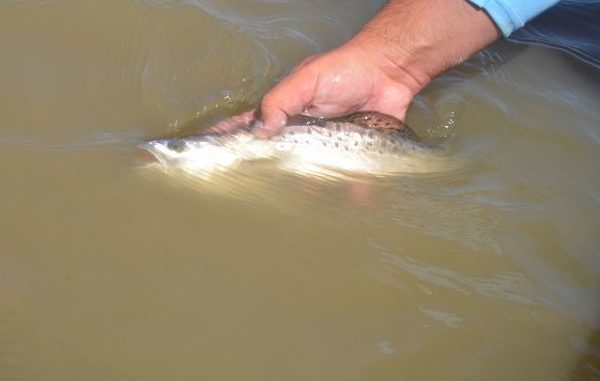
Speckled trout in Venice are no different than those elsewhere in one important way: They often concentrate on any bottom discontinuity that causes water currents to break, even if only ever so slightly.
Elsewhere, oyster reefs provide much of the structure that breaks or alters currents. But because of the amounts of freshwater the river discharges, oysters die before they can build reefs that affect currents.
So in Venice, rouseau cane stubble balls create the structure to which speckled trout gravitate.
Of course, knowing that speckled trout concentrate over stubble fields is one thing — finding these hotspots is another.
Virtually the entire Mississippi River delta is densely cloaked in 8-foot-tall rouseau canes. Both banks of any pass are lined with canes well out into the Gulf, forming what can essentially be described as points.
For some time, the delta has stopped building land into the Gulf and has been retreating. As this occurs the canes that line the tips of the points die.
The tops of the dead canes quickly break off and are carried away by water currents.
What lasts much longer are tough, intertwined balls and mats of the cane roots. As loose bottom sediments around them wash away, this stubble remains and creates what are, for all purposes, reefs.
“We will make our casts toward open water and fish as much as a quarter mile away from where the cane-lined banks currently are now,” Capt. Brandon Carter said. “It’s really hard to get people to focus on open water rather than cane edges. I tell them not to throw toward the canes unless they want to catch redfish.”
The 15-year guide stressed over and over the importance of experience for this kind of fishing.
“Experience over time equals history; the history of points is critical,” Carter said. “Inexperienced fishermen should fish with the mind set that where land is now, that’s not where it was before.
“Without experience, the best thing to do is use a trolling motor and blind cast. If you are coming from the outside, stop 100 yards or more out, and begin trolling and casting. If you are coming out of a pass, stop at the point and begin trolling out while casting.”
